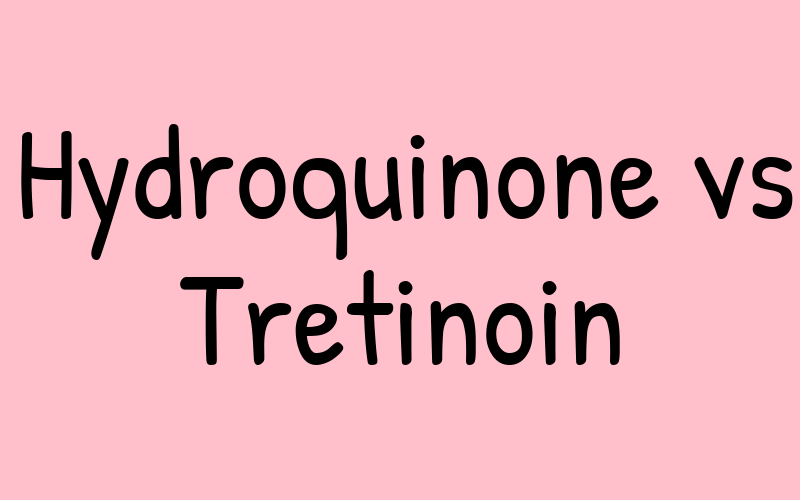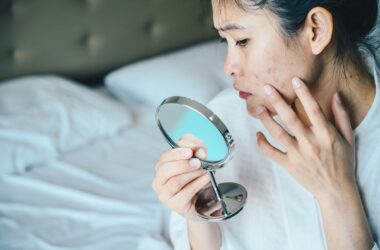Table of Contents
The Great Debate: Hydroquinone vs Tretinoin in Skincare
In the world of skincare, few ingredients spark as much controversy as hydroquinone and tretinoin. Both have been touted as miracle workers, but they’ve also been mired in debate over their efficacy, safety, and potential risks. As skincare enthusiasts, it’s essential to understand the difference between these two compounds and make informed decisions about our skincare routines. In this article, we’ll delve into the world of hydroquinone and tretinoin, exploring their unique properties, benefits, and drawbacks to help you make a well-rounded choice for your skin.
Hydroquinone: The Fade-But-Frustrating Solution
Hydroquinone, commonly found in creams, gels, and serums, is a depigmenting agent used to treat hyperpigmentation, such as melasma, acne scars, and sunspots. It works by inhibiting the production of melanin, the pigment responsible for skin darkening. As a result, hydroquinone has been widely used to fade unwanted marks and leave skin with a more even tone.
However, the widespread use of hydroquinone has also led to concerns over its long-term safety and potential side effects. Prolonged use of hydroquinone can cause a range of issues, from dryness and irritation to exfoliation and post-inflammatory hyperpigmentation (PIH). In some cases, it’s been linked to rare but severe reactions, including blood disorders and nerve damage.
Tretinoin: The Magic Behind Anti-Aging and Acne Treatments
Tretinoin, also known as retinoic acid, is a derivative of vitamin A commonly used in anti-aging and acne treatments. This potent compound promotes cell turnover, reduces inflammation, and enhances skin elasticity. Its primary functions include:
- Cell turnover: Tretinoin stimulates the exfoliation process, helping to remove dead skin cells and reveal smoother, brighter skin.
- Inflammation reduction: By decreasing inflammation, tretinoin addresses issues like redness, rosacea, and acne.
- Elasticity and firming: Tretinoin improves skin elasticity, making it look firmer, plumper, and more radiant.
Despite its impressive list of benefits, tretinoin is not without its drawbacks. New users often experience side effects like initial dryness, peeling, and sensitivity, which can be intensified when using it in high concentrations or combining it with other exfoliating ingredients. In rare cases, tretinoin can also cause more severe reactions, including photosensitivity, itchiness, and increased sun sensitivity.
Comparison and Conclusion
In the hydroquinone vs tretinoin debate, both ingredients have their strengths and weaknesses. While hydroquinone excels in its ability to treat hyperpigmentation, it comes with concerns over long-term safety and potential side effects. Tretinoin, on the other hand, is an anti-aging powerhouse with anti-inflammatory properties, but its intense action can be challenging for sensitive skin.
The takeaway? A well-balanced skincare routine incorporating both ingredients may be the best approach. Hydroquinone can be used for spot treatment and addressing specific areas of hyperpigmentation, while tretinoin can be incorporated as a nightly treatment to promote cell turnover, reduce inflammation, and improve skin texture. It’s crucial to use both ingredients under the guidance of a dermatologist and in combination with sunscreen, as well as to follow proper skincare and makeup techniques to minimize the risk of side effects.
**Summary Table:
| Ingredient | Properties | Benefits | Side Effects/Risks |
|---|---|---|---|
| Hydroquinone | Depigmenting agent | Treats hyperpigmentation | Long-term safety concerns, potential dryness and irritation |
| Tretinoin | Anti-aging, acne treatment | Enhances cell turnover, reduces inflammation, improves elasticity | Initial dryness and peeling, photosensitivity, increased sun sensitivity |
Recommended Products
-
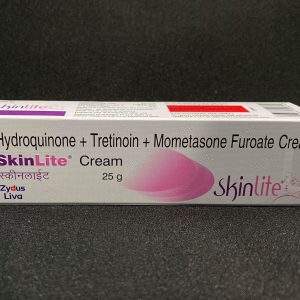 Skinlite Cream 25gKD4.000
Skinlite Cream 25gKD4.000 -
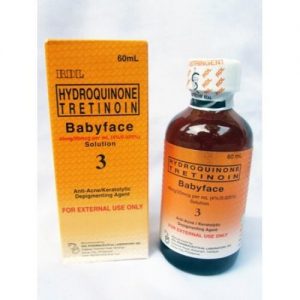 RDL Babyface Solution No. 3 60mlKD2.000
RDL Babyface Solution No. 3 60mlKD2.000 -
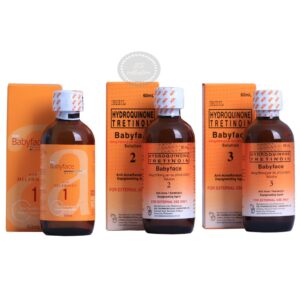 RDL Baby Face Solutions #1, #2 Or #3 60mlKD2.000
RDL Baby Face Solutions #1, #2 Or #3 60mlKD2.000 -
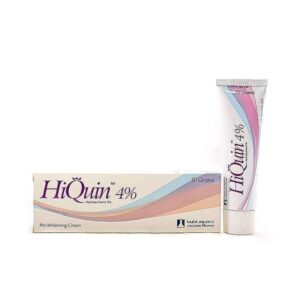 4% Hydroquinone HiQuin Cream 30gKD4.000
4% Hydroquinone HiQuin Cream 30gKD4.000 -
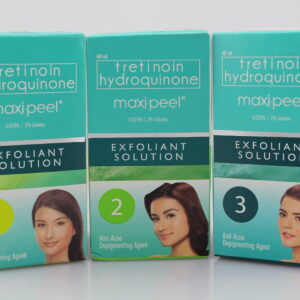 Tretinoin, Hydroquinone Maxi-Peel Exfoliant Solution 60 mLKD2.000
Tretinoin, Hydroquinone Maxi-Peel Exfoliant Solution 60 mLKD2.000 -
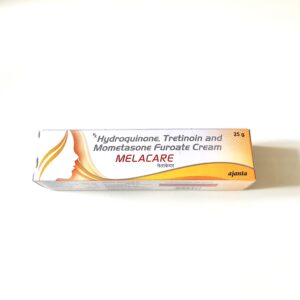 Melacare Hydroquinone + Tretinoin + Mometasone Furoate Cream 25gKD3.500
Melacare Hydroquinone + Tretinoin + Mometasone Furoate Cream 25gKD3.500 -
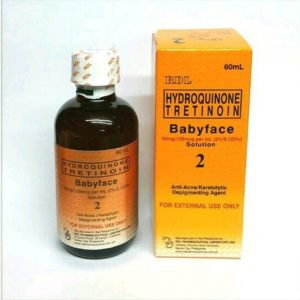 RDL Babyface Solution No. 2KD2.000
RDL Babyface Solution No. 2KD2.000 -
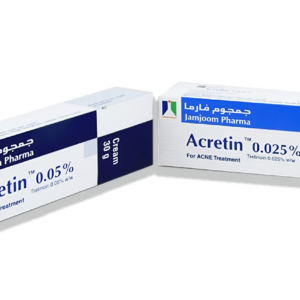 Acretin Cream 30g – 0.025%/0.05% Tretinoin For Acne TreatmentKD2.500 – KD3.500
Acretin Cream 30g – 0.025%/0.05% Tretinoin For Acne TreatmentKD2.500 – KD3.500 -
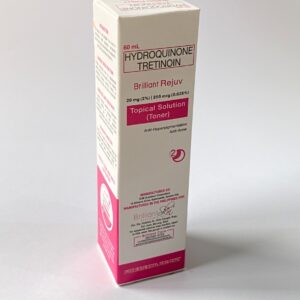 Hydroquinone Tretinoin Brilliant Rejuv Toner 60mlKD3.000
Hydroquinone Tretinoin Brilliant Rejuv Toner 60mlKD3.000 -
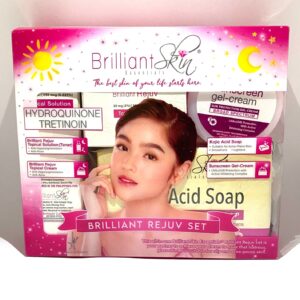 Brilliant Rejuv Set – Hydroquinone TretinoinKD7.000
Brilliant Rejuv Set – Hydroquinone TretinoinKD7.000 -
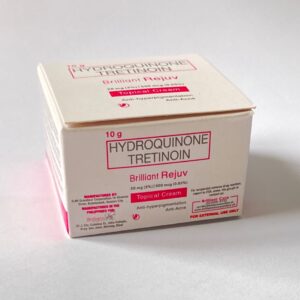 Hydroquinone Tretinoin Brilliant Rejuv Cream 10gKD3.000
Hydroquinone Tretinoin Brilliant Rejuv Cream 10gKD3.000 -
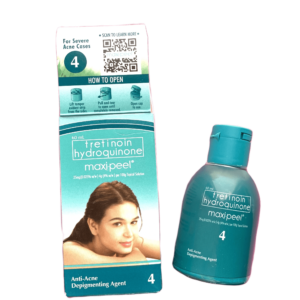 0.025% Tretinoin 4% Hydroquinone Maxi-Peel Solution No.4 60mLKD2.000
0.025% Tretinoin 4% Hydroquinone Maxi-Peel Solution No.4 60mLKD2.000 -
Product on sale
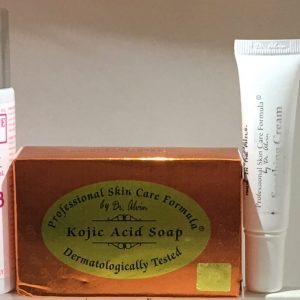 Dr Alvin Rejumax Program 3Original price was: KD9.000.KD7.000Current price is: KD7.000.
Dr Alvin Rejumax Program 3Original price was: KD9.000.KD7.000Current price is: KD7.000. -
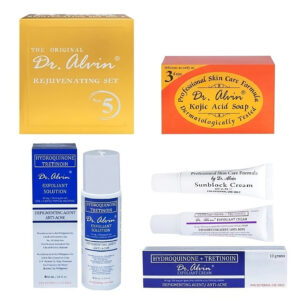 Dr. Alvin Rejuvenating Set No. 5 (Advance) – Hydroquinone + TretinoinKD7.000
Dr. Alvin Rejuvenating Set No. 5 (Advance) – Hydroquinone + TretinoinKD7.000 -
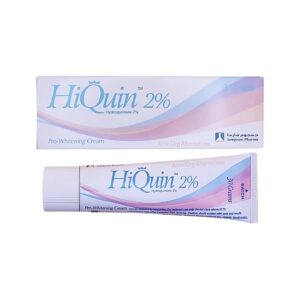 HiQuin Cream 30g – 2% Hydroquinone Solution for HyperpigmentationKD2.750
HiQuin Cream 30g – 2% Hydroquinone Solution for HyperpigmentationKD2.750 -
Product on sale
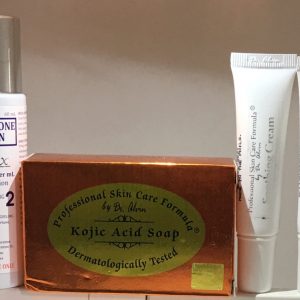 Dr Alvin Rejumax Program 2Original price was: KD9.000.KD7.000Current price is: KD7.000.
Dr Alvin Rejumax Program 2Original price was: KD9.000.KD7.000Current price is: KD7.000. -
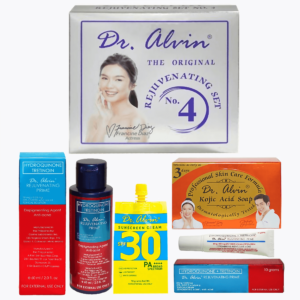 Dr. Alvin Rejuvenating Set No.4 (Prime) – Hydroquinone + TretinoinKD7.000
Dr. Alvin Rejuvenating Set No.4 (Prime) – Hydroquinone + TretinoinKD7.000 -
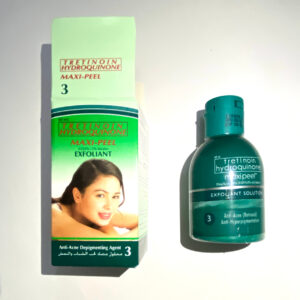 Maxi-Peel Exfoliant No.3 – 0.025%/2% Tretinoin, HydroquinoneKD2.000
Maxi-Peel Exfoliant No.3 – 0.025%/2% Tretinoin, HydroquinoneKD2.000

